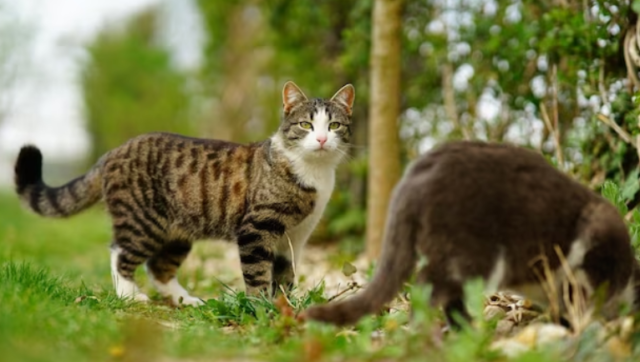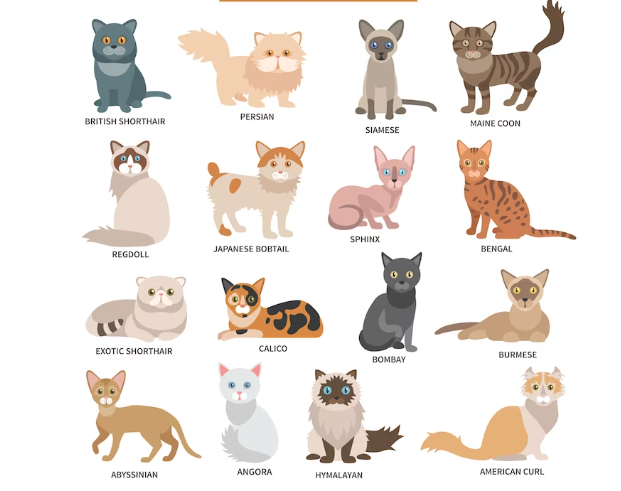Introduction
Cats are one of the most popular pets around the world, and there’s no doubt that they make wonderful companions. For those who love cats, breeding them can be an exciting and rewarding experience. However, it’s important to understand the basics of cat breeding before embarking on this journey. In this article, we’ll provide a comprehensive guide to cat breeding, covering everything from the basics to advanced techniques.
What is Cat Breeding?
Cat breeding is the process of producing offspring through controlled mating between two cats. Breeders typically aim to produce kittens with specific traits, such as a particular coat color or pattern, personality, or health characteristics.
Cat breeding can be done for various reasons, including creating new breeds, improving existing ones, or simply producing cats for pet or show purposes.
The Basics of Cat Breeding
Before you start breeding cats, it’s important to understand the basics. Here are some key points to keep in mind:
Choose healthy cats: It’s essential to choose cats that are in good health, have no genetic defects or diseases, and have been properly vaccinated.
Breeding cats that are unhealthy can result in weak kittens that may have health issues later in life.
Understand the breeding cycle: Female cats (queens) typically come into heat every two to three weeks, and the heat cycle lasts for around a week. During this time, the queen will be receptive to mating.
Male cats (toms) can mate throughout the year, but it’s best to avoid breeding very young or very old toms.
Know when to breed: Breeding should be done when the female cat is in heat, which is usually signaled by behaviors such as increased vocalization, rolling on the floor, and raising the hindquarters. It’s best to wait until the queen has had a few heat cycles before breeding her for the first time.
Choose the right mate: When choosing a mate for your cat, it’s essential to consider factors such as breed compatibility, temperament, and health. Inbreeding should be avoided, as it can increase the risk of genetic defects.

Advanced Techniques in Cat Breeding
For experienced breeders, there are several advanced techniques that can be used to produce kittens with specific traits. These include:
Artificial insemination: This involves collecting semen from a male cat and injecting it into the female cat’s reproductive tract using a catheter or syringe.
Embryo transfer: This involves transferring embryos from one female cat to another, allowing for the production of multiple litters from a single female cat.
Genetic testing: This can be used to identify cats with specific genetic traits, such as coat color or pattern, and can be used to select the best breeding pairs.
Breeding for New Cat Breeds
One of the most exciting aspects of cat breeding is the opportunity to create new cat breeds. However, this process requires a lot of time, effort, and dedication. Here are some steps to follow if you’re interested in breeding for a new cat breed:
Identify a unique trait: To create a new cat breed, you’ll need to identify a unique trait that sets your cats apart from existing breeds. This could be a specific coat color, pattern, or texture, or a distinctive personality trait.
Breed for consistency: Once you’ve identified your unique trait, you’ll need to breed your cats with a focus on producing kittens that exhibit that trait consistently. This may require several generations of breeding and careful selection.
Establish a breed standard: To be recognized as a new breed, your cats will need to meet certain standards, such as size, weight, and other physical characteristics. You’ll need to work with cat breed organizations to establish these standards and gain recognition for your new breed.
Promote your breed: Once you’ve established your new breed, you’ll need to promote it to gain wider recognition and acceptance. This may involve exhibiting your cats at shows, creating a breed website, and networking with other breeders.
Conclusion Cat breeding can be a wonderful and rewarding experience for those who love cats. Whether you’re interested in producing kittens for pet or show purposes or creating a new breed, it’s important to approach breeding responsibly and with a focus on the health and well-being of the cats. By following the tips and techniques outlined in this article, you can begin your journey as a cat breeder with confidence and enthusiasm.

FAQ
How old should a cat be before breeding?
It’s best to wait until the female cat has had a few heat cycles before breeding her for the first time, which is usually around six to eight months old.
How long does the cat pregnancy last?
Cat pregnancy typically lasts for around 63-65 days.
How many kittens can a cat have in a litter?
Cats can have litters of anywhere from one to twelve kittens, with the average being around four to six.
How can I tell if my cat is in heat?
Signs that a female cat is in heat include increased vocalization, rolling on the floor, and raising the hindquarters.
Is cat breeding ethically?
As long as breeding is done responsibly, with a focus on the health and well-being of the cats, there’s no reason why it can’t be ethical.


